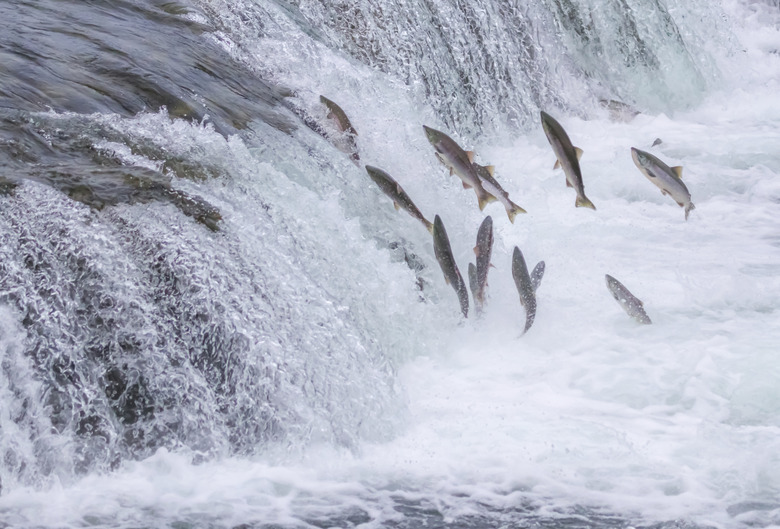How Do Fish Lay Eggs?
Most fish species lay eggs. However, a few produce live young, including guppies, mollies, and swordfish. Spawning strategies for survival range from producing a lot of eggs — thus increasing the chance that some will escape predators — to offering some parental protection. Other fish species, however, conceal eggs in nests or substrate or hold eggs in their mouth until they hatch. Knowing the spawning habits of the fish species in your home aquarium is essential if you wish to create an appropriate breeding environment.
Breeding captive fish
Breeding captive fish
First, you need to know that you have both male and female fish of the same species in your tank. Then, create the right setting. Fish comfortable with their environment are more likely to spawn, though not all species reproduce easily in tanks.
Fortunately, schooling fish popular in hobby tanks are the most likely to breed in captivity. These fish include barbs, danios, cichlids, and tetras. Goldfish, however, are more temperamental. They will only lay eggs in a big tank that's adjusted to correct temperatures.
How do fish lay eggs?
How do fish lay eggs?
When they are ready to release eggs, female fish are usually visibly wider than male fish. Females will release hundreds or thousands of eggs depending on species. The eggs fall to the bottom of the tank or land in clusters. Males then swim over the eggs, releasing sperm to fertilize the eggs.
Species that scatter eggs, such as danios, release nonadhesive eggs that fall randomly to the bottom of the tank or that float. Egg-depositors lay larger eggs that stick to substrate, wood, rocks, or the tank base. Other species are egg buriers, which means females will bury the eggs in the substrate on the bottom of the tank. The male must dive into the substrate to fertilize the eggs.
Not all fish produce eggs
Not all fish produce eggs
A few species of fish do not lay eggs but produce live babies, called fry. Some live bearers breed easily in home aquariums, including guppies, swordtail, Endlers fish, mollies, and platies. For these fish, egg fertilization occurs internally through mating using a modified anal fin called a gonopodium. Gestation usually takes between two and four weeks.
The fertilized eggs mature and hatch inside the female, who then gives birth to live offspring. The birthing process takes between six and 12 hours depending on the species and the number of fry. Many species of fish eat their young, including guppies. Therefore, it's often a good idea to separate fry from adult fish unless they are a protective species.
Protecting eggs and fry
Protecting eggs and fry
A few species of fish guard both eggs and young before and after hatching. For instance, suckermouth catfish males protect the eggs of their mates until they hatch, and cichlids warn fry of danger. Cichlids are also mouth brooders, meaning they carry their eggs protectively in their mouth until they hatch.
Cichlids don't eat during this time — usually between 21 and 36 days. Sometimes, they even allow hatched fry to hide inside their mouth to escape predators. Other species, such as beta fish, create protective bubble nests around unhatched eggs.
What time of year do fish reproduce?
What time of year do fish reproduce?
Mating season depends on the species of fish. Some species breed all year, such as guppies, swordtails, and mollies. Others are dependent on season, when the water temperature is correct and/or the food source is plentiful.
Of course, you can reproduce ideal conditions in a home aquarium by raising the water temperature gradually and extending the length of time the lights are on. Adding high-protein food to their diet can also help contribute to desirable breeding conditions.
